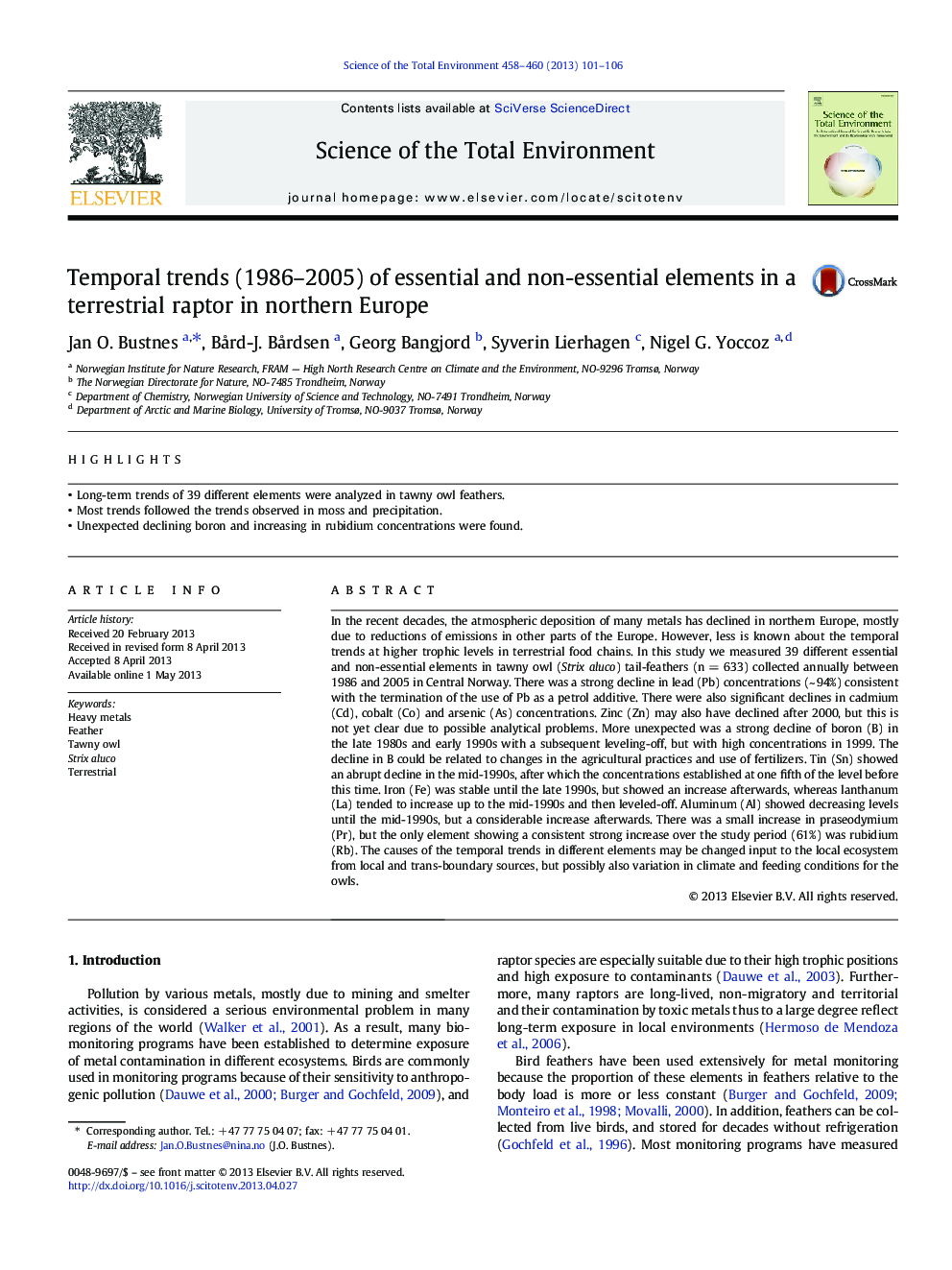| Article ID | Journal | Published Year | Pages | File Type |
|---|---|---|---|---|
| 4428611 | Science of The Total Environment | 2013 | 6 Pages |
•Long-term trends of 39 different elements were analyzed in tawny owl feathers.•Most trends followed the trends observed in moss and precipitation.•Unexpected declining boron and increasing in rubidium concentrations were found.
In the recent decades, the atmospheric deposition of many metals has declined in northern Europe, mostly due to reductions of emissions in other parts of the Europe. However, less is known about the temporal trends at higher trophic levels in terrestrial food chains. In this study we measured 39 different essential and non-essential elements in tawny owl (Strix aluco) tail-feathers (n = 633) collected annually between 1986 and 2005 in Central Norway. There was a strong decline in lead (Pb) concentrations (~ 94%) consistent with the termination of the use of Pb as a petrol additive. There were also significant declines in cadmium (Cd), cobalt (Co) and arsenic (As) concentrations. Zinc (Zn) may also have declined after 2000, but this is not yet clear due to possible analytical problems. More unexpected was a strong decline of boron (B) in the late 1980s and early 1990s with a subsequent leveling-off, but with high concentrations in 1999. The decline in B could be related to changes in the agricultural practices and use of fertilizers. Tin (Sn) showed an abrupt decline in the mid-1990s, after which the concentrations established at one fifth of the level before this time. Iron (Fe) was stable until the late 1990s, but showed an increase afterwards, whereas lanthanum (La) tended to increase up to the mid-1990s and then leveled-off. Aluminum (Al) showed decreasing levels until the mid-1990s, but a considerable increase afterwards. There was a small increase in praseodymium (Pr), but the only element showing a consistent strong increase over the study period (61%) was rubidium (Rb). The causes of the temporal trends in different elements may be changed input to the local ecosystem from local and trans-boundary sources, but possibly also variation in climate and feeding conditions for the owls.
